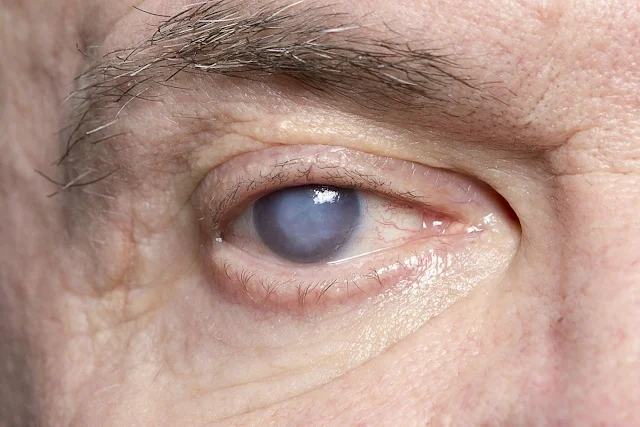Cataracts (Motiyabind): Types, Causes, Symptoms, and Risk Factors
What is Motiyabind (Cataracts) in the Eyes?
Motiyabind, known as cataracts in English, is the clouding of the clear lens in the eye, leading to blurry vision. This white motia in eyes makes it difficult to see things clearly, similar to looking through a foggy window. People with black motiyabind may experience problems with everyday tasks like reading, driving (especially at night), and recognizing faces.
Cataracts usually develop gradually as we age and don't affect vision immediately. However, over time, cataracts can significantly impair vision. In the early stages, stronger lighting or glasses may help, but once cataracts interfere with daily activities, surgery becomes necessary. Fortunately, cataract surgery is a safe and effective procedure for restoring clear vision.
How are Cataracts (Motiyabind) Formed?
The eye’s lens is located behind the iris (the colored part of the eye) and focuses light onto the retina, which sends images to the brain via the optic nerve. When the lens becomes cloudy due to cataracts, light is scattered, and the eye can’t focus properly, leading to blurry vision.
“The lens primarily consists of proteins and water. Cataracts form when changes in these proteins and fibers cloud the lens.”
What Causes Cataracts (Motiyabind)?
Several factors can lead to the formation of cataracts. These include:
Age-related changes
Overproduction of oxidants
Ultraviolet (UV) radiation exposure
Smoking
Long-term steroid use
Diabetes
Trauma to the eye
Here’s a list of common risk factors:
Aging
Diabetes
Excessive sun or X-ray exposure
Obesity
High blood pressure
Smoking
Previous eye injuries or inflammation
Excessive alcohol consumption
Types of Cataracts (Motiyabind)
There are different types of cataracts. The most common ones include:
Nuclear Cataracts: These form in the center (nucleus) of the lens, causing it to yellow or brown.
Cortical Cataracts: These start at the outer edge of the lens and gradually extend toward the center.
Posterior Capsular Cataracts: These affect the back of the lens and develop more quickly than nuclear or cortical cataracts.
Congenital Cataracts: Some people are born with cataracts or develop them during childhood due to genetic factors, infections, or trauma.
Signs and Symptoms of Cataracts (Motiyabind)
Symptoms of motiyabind include:
Blurred or foggy vision
Difficulty seeing at night
Sensitivity to light
Fading or yellowing of colors
Seeing halos around lights
Needing more light to read
Frequent changes in prescription glasses or contacts
Diagnostic Procedures for Cataracts (Motiyabind)
If you suspect cataracts, several diagnostic cataracts tests can confirm the condition:
Visual Acuity Test: Assesses your ability to see clearly at various distances.
Slit-Lamp Examination:
Provides a magnified view of the eye’s structures, including the cornea, iris, and lens.
Retinal Examination: Uses an ophthalmoscope to check the retina and optic nerve for abnormalities.
Tonometry: Measures the pressure inside the eye (important for detecting other conditions like glaucoma).
Dilated Eye Exam: Dilating drops are used to get a clearer view of the lens and retina.
Visual Field Test: Assesses peripheral vision.
Treatment of Cataracts (Motiyabind)
In the early stages, cataracts can be managed with stronger eyeglasses or contact lenses. However, cataracts usually worsen over time, and surgery becomes necessary.
Cataract (Motiyabind) Surgery Procedure
Surgery is typically recommended by cataract doctors when cataracts significantly interfere with daily activities, such as reading or driving. It is also required when cataracts complicate the treatment of other eye conditions.
The most common surgical procedure is phacoemulsification, which uses ultrasound waves to break up and remove the cloudy lens. A synthetic lens is then placed to replace it. In some cases, a longer incision is made to remove the lens in one piece, followed by the placement of an artificial intraocular lens.
Cataract surgery is typically safe and has a high success rate. While complications such as infection, bleeding, or retinal detachment can occur, they are rare, affecting less than 1% of patients. Most people can return home the same day as the surgery.
Check out the best hospital for laser eye surgery.
Did You Know? Cataract surgery in India boasts a success rate of 98%.
What to Expect After Cataract Surgery?
After surgery, you may experience itching, mild discomfort, watery eyes, blurry vision, or sensitivity to light. Your doctor will recommend avoiding certain activities for a week or so, such as bending over, lifting heavy objects, or touching your eyes.
Recovery
Recovery from cataract surgery is typically quick, with most people fully healing within 7-8 weeks. You can usually return to daily activities just a day or two after the procedure.
Prevention of Cataracts (Motiyabind)
While cataracts may not always be preventable, the following steps can help reduce the risk:
Wear sunglasses for your eyes protection from harmful UV rays.
Get regular eye exams.
Quit smoking.
Take a rich diet in antioxidants, including plenty of fruits and vegetables.
Maintain a healthy weight through exercise.
Manage diabetes and other health conditions.
Final Steps
Cataracts are a common issue affecting many people worldwide. If left untreated, they can lead to severe vision problems. It’s advisable to have cataract surgery as soon as symptoms worsen, as waiting too long can make the condition harder to treat.



Comments
Post a Comment